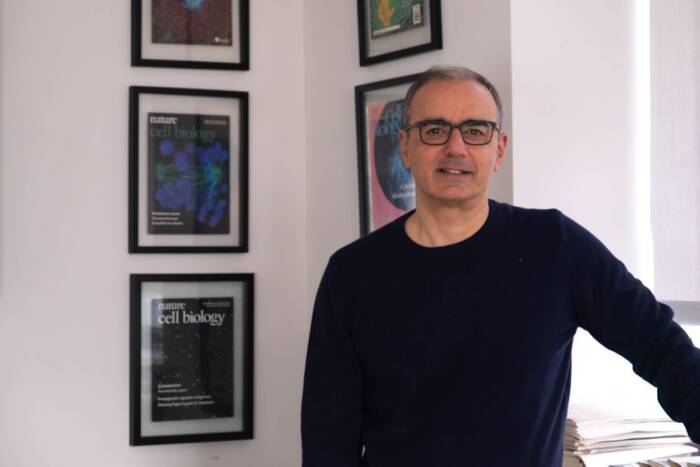Study captures the molecular architect of cells’ infrastructure
Each of the body’s cells contain a miniature version of New York’s subway system—an intricate network of tracks called microtubules along which cargo moves from place to place. The integrity of this system is essential for life: incorrectly assembled microtubules have been linked to a broad range of diseases, including Alzheimer’s and cancer; and to problems in the early stages of development that may lead to pregnancy loss.
Tarun Kapoor, Rockefeller’s Pels Family Professor, and colleagues have constructed the most detailed view yet of the main architect behind this giant piece of infrastructure: a mass of proteins called the γ-tubulin ring complex, which determines how the tracks form and in which direction they run. In work published in Cell, scientists used cryo-electron microscopy to determine the structure of the γ-tubulin ring complex at atomic resolution, revealing how its more than 26 components fit together.
“The γ-tubulin ring complex was sort of a black box,” says Kapoor. “This work addresses a major gap in basic cell biology knowledge, and now we understand more about how disrupting this complex leads to a failure in intracellular transport.”



